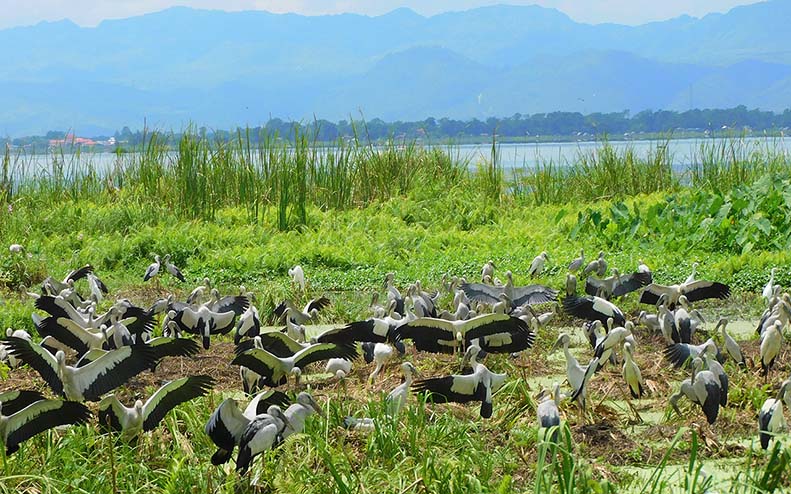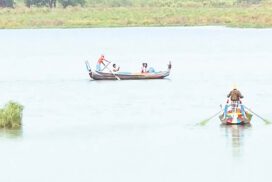Inlay Lake, Myanmar’s second-largest lake, located between two mountain ranges spanning from south to north is a Ramsar site and various marine animals and bird species live there, and15 migratory bird species enter the lake starting in October.
The water birds such as three species of gull, four species of ducks, three species of sandpiper, two species of kite and three species of shite wagtail take refuge at Inlay Lake and the endangered duck species also enter the lake show the progress in the natural environment of the lake. In this month, 271 species of resident birds and 98 birds including water birds and migratory birds are flocking to the lake as also the rare birds such as mallard, ruddy shelduck and Crane.
“We are conducting Inlay Lake conservation works and patrols to protect water birds and migratory birds normally. Then, we also prepare pastures for birds as separate conservation. We are making efforts to prevent battery fishing as per the plans. Inlay Lake is a place where foreign visitors and bird lovers are most interested. It is the flyway network site and it should be conserved. When migratory birds take refuge there, bird watchers and experts from international countries come there and it supports the basic tourism industry and creates job opportunities for the residents. Therefore, all should participate in the conservation of migratory birds. If they disappear, it can affect the income of locals. The migratory birds lure the interest of international countries and if we protect and conserve them, it is sure that it can improve the tourism industry of our country,” said U Tin Mya Soe, head of the Inlay Lake Wildlife Sanctuary.
In 2021, 27 species of migratory birds entered Inlay Lake in early October and left for the North Pole in March and April. Biodiversity conservation is implemented in Inlay Lake and the lake hosts the second-largest number of migratory birds after Indawgyi Lake.
As there is no forest at Inlay Lake, there are no mammals and is a conservation place for resident birds, migratory birds and marine animals. The lake possesses 13 fish species including Cyprinus intha out of 16 resident fish species. The Inlay Lake Ramsar Site receives thousands of birds and the officials conserve the biodiversity and sustainability of the lake not to affect the natural environment.
The Inlay Lake in Nyaungshwe Township of southern Shan State is one of the nine Flyway Network Sites and it is Man and the Biosphere Reserve and so it plays a key role as the International Ramsar Site.
The migratory birds from the North Pole take refuge at new locations during winter to escape from the extreme weather. The migratory birds entering Inlay wildlife sanctuary are from Siberia and 15 migratory bird species enter the lake starting in October this winter. — Nyein Thu (MNA)/GNLM
15 species of migratory birds sojourn at Inlay Lake
- November 13, 2022
- 923












